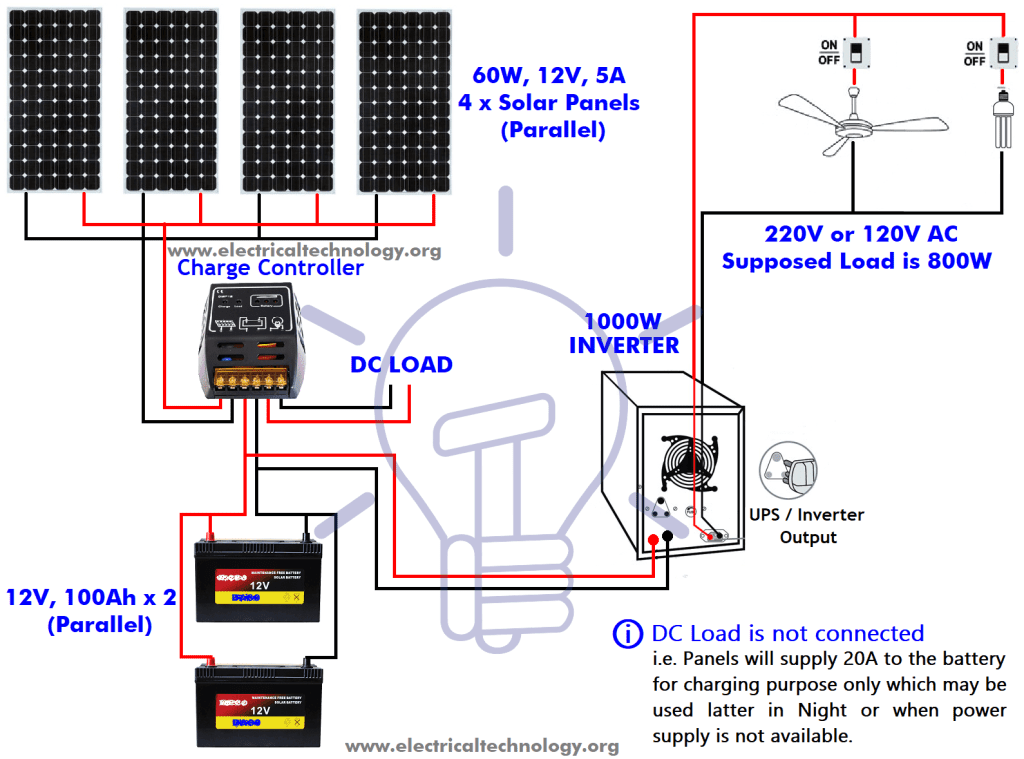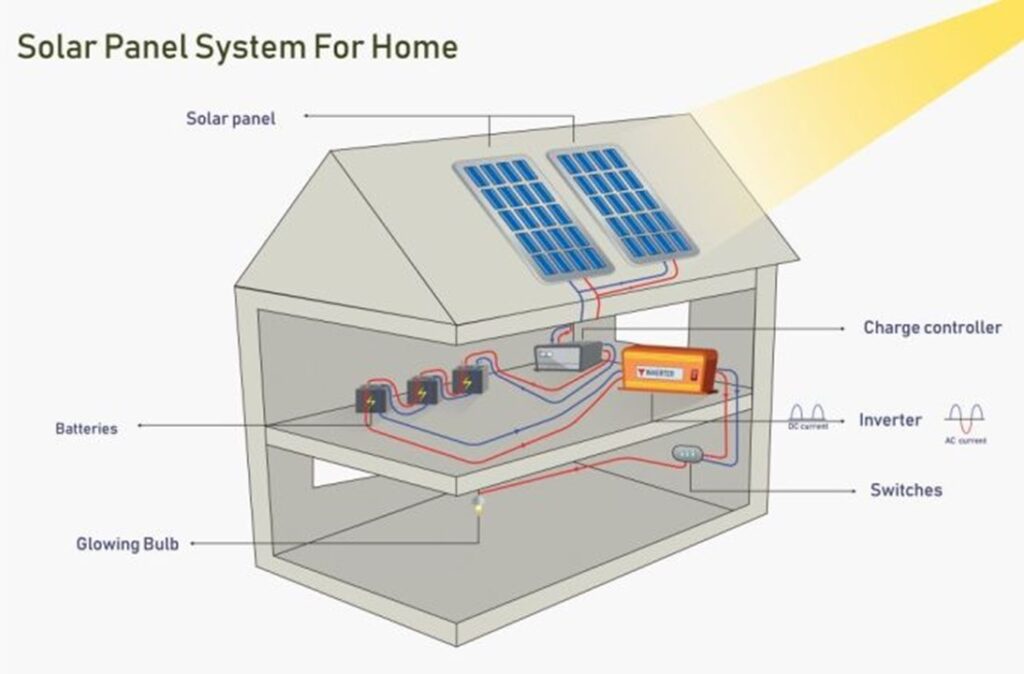What Is The Best Way To Install Solar Power Wiring In A House?
“What is the best way to install solar power wiring in a house?”
Installing solar power wiring in a house can be a complex process, requiring careful planning, execution, and attention to detail. In this article, we will explore the best way to install solar power wiring in a house, covering the essential steps, considerations, and best practices to ensure a safe, efficient, and effective solar power system.
Understanding the Basics of Solar Power Wiring
Before we dive into the installation process, it’s essential to understand the basics of solar power wiring. A typical solar power system consists of solar panels, an inverter, a charge controller, and a battery bank (if applicable). The solar panels convert sunlight into direct current (DC) electricity, which is then sent to the inverter. The inverter converts the DC power into alternating current (AC) power, which is used to power electrical appliances in the house.
The wiring system plays a crucial role in connecting the various components of the solar power system. It must be designed to handle the electrical current generated by the solar panels, as well as the voltage and power requirements of the inverter and other system components. The wiring system typically includes:
- Solar panel wiring: Connecting the solar panels to the charge controller or inverter.
- DC wiring: Connecting the charge controller to the battery bank (if applicable) and the inverter.
- AC wiring: Connecting the inverter to the main electrical panel and the grid (if applicable).
Step 1: Planning and Designing the Solar Power System
Before installing the solar power wiring, it’s essential to plan and design the solar power system carefully. This involves:

- Assessing the energy requirements: Determine the energy needs of the house, including the number of appliances, lighting, and other electrical loads.
- Determining the solar panel size and layout: Calculate the required solar panel size and layout to meet the energy needs, taking into account factors like roof size, orientation, and shading.
- Selecting the inverter and charge controller: Choose an inverter and charge controller that match the solar panel specifications and energy requirements.
- Designing the wiring system: Create a detailed wiring diagram, including the type and size of wire, connectors, and other components.

Step 2: Preparing the Site and Installing the Solar Panels
Once the planning and design phase is complete, it’s time to prepare the site and install the solar panels. This involves:
- Cleaning and inspecting the roof: Ensure the roof is clean and free of debris, and inspect it for any damage or weaknesses.
- Installing the solar panel mounting system: Install the solar panel mounting system, including the racks, clamps, and other hardware.
- Connecting the solar panels: Connect the solar panels to the mounting system, ensuring they are securely fastened and aligned properly.
- Installing the solar panel wiring: Connect the solar panels to the charge controller or inverter, using the planned wiring diagram as a guide.

Step 3: Installing the Inverter and Charge Controller
The inverter and charge controller are critical components of the solar power system. Installing them requires careful attention to detail, as follows:
- Mounting the inverter and charge controller: Install the inverter and charge controller in a well-ventilated area, away from direct sunlight and moisture.
- Connecting the DC wiring: Connect the DC wiring from the solar panels to the charge controller, and from the charge controller to the battery bank (if applicable) and the inverter.
- Configuring the inverter settings: Configure the inverter settings, including the input voltage, output voltage, and frequency.
- Testing the inverter and charge controller: Test the inverter and charge controller to ensure they are functioning properly and communicating with the solar panels and other system components.
Step 4: Installing the AC Wiring
The AC wiring connects the inverter to the main electrical panel and the grid (if applicable). This requires:
- Determining the AC wiring requirements: Calculate the required AC wiring size and type, based on the inverter output and energy requirements.
- Installing the AC wiring: Install the AC wiring from the inverter to the main electrical panel, using the planned wiring diagram as a guide.
- Connecting to the grid (if applicable): Connect the AC wiring to the grid, ensuring compliance with local electrical codes and regulations.
- Testing the AC wiring: Test the AC wiring to ensure it is functioning properly and safely.
Best Practices for Installing Solar Power Wiring
To ensure a safe, efficient, and effective solar power system, follow these best practices when installing solar power wiring:
- Use high-quality wiring and components: Use wiring and components that meet or exceed industry standards, such as UL (Underwriters Laboratories) and NEC (National Electric Code) certification.
- Follow local electrical codes and regulations: Ensure compliance with local electrical codes and regulations, including those related to solar power systems.
- Use proper wiring techniques: Use proper wiring techniques, including stripping, crimping, and soldering, to ensure reliable and safe connections.
- Test and inspect the wiring system: Test and inspect the wiring system regularly to ensure it is functioning properly and safely.
- Consider hiring a professional: Consider hiring a professional solar installer or electrician if you are not experienced in solar power wiring installation.
Conclusion
Installing solar power wiring in a house requires careful planning, execution, and attention to detail. By following the steps outlined in this article and adhering to best practices, you can ensure a safe, efficient, and effective solar power system that meets your energy needs and reduces your environmental impact. Remember to always follow local electrical codes and regulations, and consider hiring a professional if you are not experienced in solar power wiring installation. With the right installation and maintenance, your solar power system can provide you with clean, renewable energy for years to come.
Additional Tips and Considerations
- Monitor and maintain the system: Regularly monitor and maintain the solar power system to ensure it is functioning properly and efficiently.
- Consider energy storage options: Consider energy storage options, such as batteries, to store excess energy generated by the solar panels.
- Integrate with other renewable energy sources: Integrate the solar power system with other renewable energy sources, such as wind or hydro power, to create a hybrid system.
- Incorporate energy-efficient appliances: Incorporate energy-efficient appliances and lighting to reduce energy consumption and maximize the benefits of the solar power system.
- Stay up-to-date with industry developments: Stay up-to-date with industry developments and advancements in solar power technology to ensure your system remains efficient and effective.
By following these tips and considerations, you can optimize your solar power system and enjoy the many benefits of clean, renewable energy.
